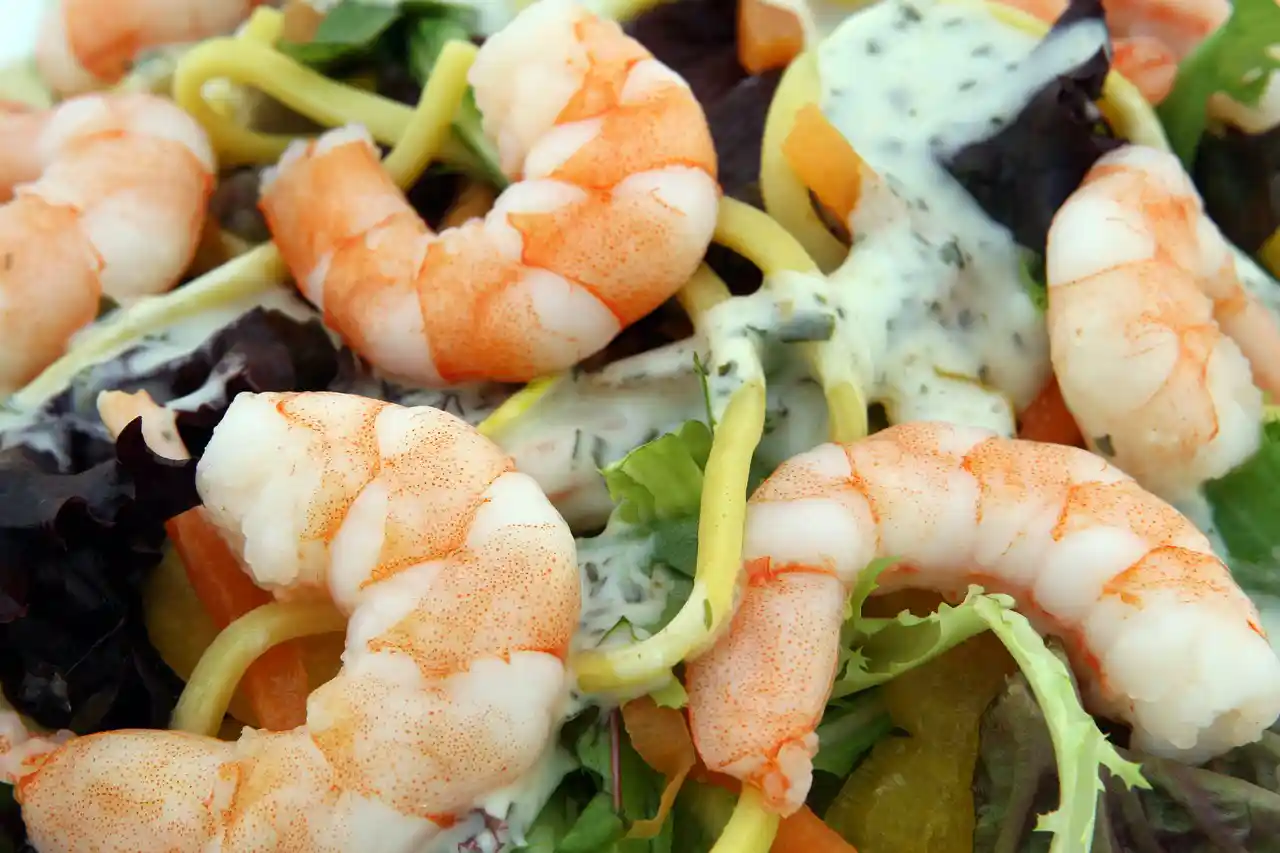Seafood is one of the most versatile food groups, with a wide range of flavors and textures that can be paired with a variety of drinks. While wine is a popular choice, gin is an underrated option that can elevate seafood dishes to new heights. In this article, we’ll explore the best gin and seafood pairings, and explain why they work so well together.
Introduction
Gin is a distilled spirit that is made from juniper berries, herbs, and other botanicals. Its unique flavor profile, which ranges from floral and citrusy to spicy and earthy, makes it an excellent pairing for seafood. Gin’s complexity of flavors can complement and enhance the subtle flavors of seafood, while its acidity can cut through the richness of the dish.
Why gin is a great pairing for seafood
Seafood dishes are often delicate and nuanced, with a variety of flavors and textures that can be difficult to pair with a drink. Wine is a popular choice, but it can be too heavy or too acidic for certain seafood dishes. Gin, on the other hand, is a lighter and more versatile option that can be paired with a wide range of seafood.
Gin’s botanicals and herbs can add complexity and depth to seafood dishes, while its acidity can help to balance out the richness of the dish. Gin’s versatility also makes it a great choice for pairing with different types of seafood, from delicate shellfish to oily fish and crustaceans.
Understanding the flavors of gin
To understand why gin is such a great pairing for seafood, it’s important to understand the different flavors of gin. The flavor profile of gin can vary greatly depending on the botanicals used, but some of the most common flavors include:
- Juniper: the defining flavor of gin, which is piney and resinous
- Citrus: often used in gin, which can range from lemon and lime to grapefruit and orange
- Floral: botanicals such as lavender, rose, and chamomile can add floral notes to gin
- Spicy: botanicals such as coriander, cardamom, and cinnamon can add spicy notes to gin
- Earthy: botanicals such as angelica root, orris root, and licorice can add earthy notes to gin
Pairing gin with shellfish
Shellfish, such as oysters, clams, and scallops, are delicate and briny, with a subtle sweetness. They can be paired with a variety of gins, but those that have a light and floral flavor profile tend to work best.
A gin and tonic with a slice of lime is a classic pairing for oysters, while a martini made with a floral gin such as Hendrick’s can complement the sweetness of scallops. For a twist on the classic gin and tonic, try adding a splash of St. Germain elderflower liqueur, which can enhance the floral notes of the gin.
Pairing gin with white fish
White fish, such as cod, haddock, and sole, are mild and flaky, with a delicate flavor that can be easily overwhelmed by strong Sure, my apologies for the mistake earlier. Here’s the continuation of the article:
flavors. Gin with a citrus or herbal profile can be a great pairing for white fish dishes.
A gin and tonic with a slice of grapefruit can enhance the delicate flavor of cod, while a gin and cucumber cocktail can be a refreshing complement to grilled haddock. For a more complex flavor profile, try pairing a spicy gin with a creamy white fish chowder.
Pairing gin with oily fish
Oily fish, such as salmon, mackerel, and tuna, have a richer flavor and a firmer texture than white fish. They pair well with gins that have a strong and complex flavor profile, such as those with notes of juniper, citrus, and spice.
A gin and tonic with a slice of orange can bring out the rich flavor of grilled salmon, while a gin and ginger cocktail can complement the spiciness of seared tuna. For a unique twist, try pairing a smoky gin with a grilled mackerel dish.
Pairing gin with crustaceans
Crustaceans, such as lobster and crab, have a sweet and delicate flavor that can be complemented by a floral or citrusy gin. A classic gin and tonic with a slice of lemon can be a great pairing for a lobster tail, while a gin and grapefruit cocktail can balance out the richness of a crab cake.
For a more complex flavor profile, try pairing a gin with a hint of spice with a creamy lobster bisque.
Pairing gin with mollusks
Mollusks, such as squid and octopus, have a firmer texture and a slightly sweet flavor. They pair well with gins that have a strong and complex flavor profile, such as those with notes of juniper, citrus, and spice.
A gin and tonic with a slice of lime can complement the subtle flavor of grilled squid, while a gin and ginger cocktail can balance out the richness of a grilled octopus dish. For a unique twist, try pairing a floral gin with a spicy calamari dish.
Pairing gin with sushi and sashimi
Sushi and sashimi are delicate and nuanced dishes that require a drink that can complement and enhance their subtle flavors. Gin with a floral or herbal profile can be a great pairing for sushi and sashimi, as it can add complexity and depth to the dish.
A gin and tonic with a slice of cucumber can be a refreshing complement to a tuna sashimi, while a gin and yuzu cocktail can enhance the flavor of a salmon sushi roll. For a unique twist, try pairing a spicy gin with a sushi roll that has a kick of wasabi.
Gin-based seafood cocktails
Gin-based seafood cocktails are a great way to enjoy the pairing of gin and seafood in a refreshing and unique way. Some popular gin-based seafood cocktails include:
- The Oyster martini: a classic martini made with a dash of oyster brine
- The Crab Claw Bloody Mary: a spicy Bloody Mary with a crab claw garnish
- The Shrimp and Gin Fizz: a refreshing cocktail made with gin, lemon juice, and a shrimp garnish
- The Lobster Tail Martini: a martini made with lobster-infused gin and garnished with a small lobster tail
The best gin and seafood restaurants around the world
If you’re looking to experience the best gin and seafood pairings, there are some amazing restaurants around the world that specialize in this unique pairing. Some of the best gin and seafood restaurants include:
- The Gin Joint in Charleston, South Carolina, USA
- The Oyster Bar in London, England
- The Fishmarket Restaurant in Sydney, Australia
- The Gin & Tonic Bar
- in Barcelona, Spain
- The Ginza Kyubey in Tokyo, Japan
Gin and seafood tasting tips
When tasting gin and seafood pairings, there are a few tips to keep in mind to fully appreciate the flavors of the dishes and the drinks:
- Start with a light gin and seafood pairing, such as oysters with a gin and tonic, before moving on to heavier dishes and gins.
- Take small sips of the gin and let it sit on your tongue for a few seconds to fully appreciate its flavors.
- Pair the gin and seafood in a way that allows both the dish and the drink to shine. Avoid pairing overly complex gins with delicate seafood dishes that may be overwhelmed by the flavors.
Conclusion
Gin and seafood are a match made in heaven, with the complex and nuanced flavors of gin complementing the subtle and rich flavors of seafood dishes. From shellfish to sushi, there are endless ways to pair gin and seafood to create a unique and unforgettable dining experience.
FAQs
- Can I pair any type of gin with any type of seafood?
While some pairings are more complementary than others, there are many different types of gin and seafood that can be paired in unique and interesting ways.
- Can I use gin in seafood recipes?
Yes, gin can be used as an ingredient in seafood recipes to add depth and complexity to the dish.
- Can I substitute gin for other types of alcohol in seafood recipes?
While gin has a unique flavor profile, it can be substituted for other types of alcohol in seafood recipes to create new and interesting flavor combinations.
- How should I store gin?
Gin should be stored in a cool, dry place away from direct sunlight to maintain its quality and flavor.
- What are some other unique gin pairings?
In addition to seafood, gin can be paired with a variety of different foods and flavors, including cheese, chocolate, and citrus fruits.









